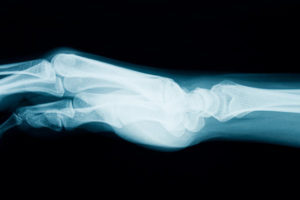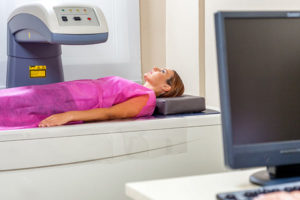
Knowing your risk can help you catch osteoporosis early

It’s often called the silent disease, because people who have osteoporosis are completely unaware of it until they suffer a bone fracture. There are often no symptoms before then.
The exact cause or causes of osteoporosis are still unknown to researchers, but we know the impacts of the disease. Osteoporosis causes bones to lose mass and become weak, often affecting the hips, spine and wrists. The disease can be symptom-free and go undetected until a weakened bone fractures and a health care provider can then diagnose the cause of the fracture. Weakened vertebra in your spine can also collapse, causing severe back pain.
So, who is most likely to have osteoporosis and is there anything you can do to find the disease before your bones start fracturing?
Am I at increased risk of developing osteoporosis?
Women are four times more likely than men to get osteoporosis. Women who answer “yes” to any of the following questions are at an even greater risk of developing osteoporosis:
Are you…?
- Light-skinned
- Thin or small-framed
- Approaching or past menopause
- Milk intolerant or have a low calcium intake
Do you have…?
- A family history of osteoporosis
- Chronic intestinal disorders
- A sedentary lifestyle
- An eating disorder
Detecting bone loss
If you answered yes to any of the questions above, you should speak with your health care provider about bone density testing. A bone mineral density test of the hip and spine is the gold standard for detecting low bone mass, according to Tiffany Magallanes, director of radiology at OSF HealthCare Saint Paul Medical Center in Mendota, Illinois.

Osteoporosis is diagnosed using specialized X-ray technology called dual-energy X-ray absorptiometry, known as a DXA scanner. This approach safely, accurately, quickly and painlessly measures bone density and helps providers identify decreased bone mass.
You lay comfortably on a padded table while the DXA unit scans two or more areas, usually the fracture-prone hip and spine. Unlike typical X-ray machines, radiation exposure is extremely low. The entire process takes only minutes to complete, involves no injections or invasive procedures, and you remain fully clothed.
The earlier osteoporosis is diagnosed, the more likely it is that treatment will be successful. Plus, several drug therapies now on the market have been shown to effectively slow down or reverse bone loss.
Prevention and treatment
“There is no cure for osteoporosis,” Magallanes said. “The goal of treatment is to protect and strengthen the bones. Treatment usually includes a combination of drugs and lifestyle changes to help slow the rate of bone resorption by the body.”
There are steps you can take that can help prevent osteoporosis, or, if you have the disease, can also help slow its progression.
 Make calcium-rich foods a regular part of your diet or consider calcium and vitamin D supplements.
Make calcium-rich foods a regular part of your diet or consider calcium and vitamin D supplements.- Exercise regularly.
- Don’t smoke.
- Reduce your intake of soft drinks and coffee.
- Keep alcohol consumption to moderate levels.
- Speak with your doctor about testing for bone density and potential fractures.
All women 65 and older should get a bone density scan. If you are a woman with any risk factors, you should get tested at a younger age. Speak with your doctor about the right time for you to get tested.
Learn more here.